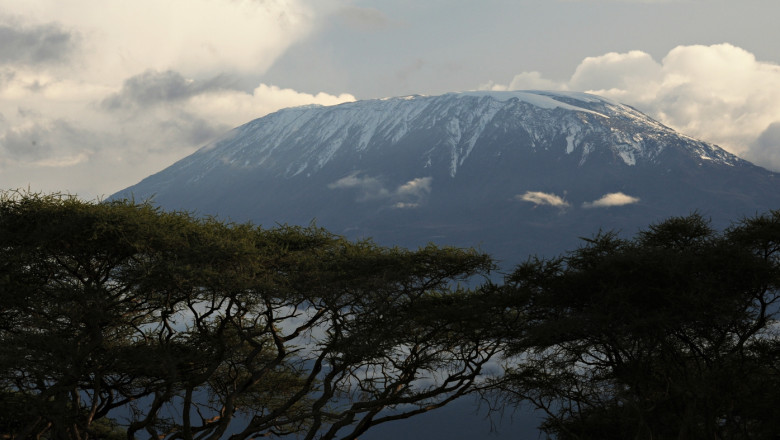
views
Glaciers from Yellowstone to Kilimanjaro are predicted to disappear by 2050

Africa's last remaining glaciers, including on Mount Kilimanjaro, are expected to melt by 2050. The mountain is seen here in 2009. Roberto Schmidt/AFP via Getty Images hide caption
Africa's last remaining glaciers, including on Mount Kilimanjaro, are expected to melt by 2050. The mountain is seen here in 2009.
In North America and around the globe, 50 UNESCO World Heritage sites are home to glaciers. A new study warns that glaciers in a third of them will disappear by 2050 due to carbon emissions warming the planet.
The other two-thirds can still be saved — but only if global temperatures don't exceed 1.5 degrees Celsius compared with pre-industrial times, UNESCO says.
World Heritage sites are places that have outstanding natural and cultural heritage, and that world leaders have thus agreed to protect.
UNESCO's report, released ahead of the COP27 climate conference starting Sunday in Egypt, is bracing.
 Climate Here's how far behind the world is on reining in climate change
Climate Here's how far behind the world is on reining in climate change
About 18,600 glaciers are found in World Heritage sites, and they represent about a tenth of the glacierized area on Earth — but they are shrinking quickly. The glaciers in these 50 sites are losing some 58 billion tons of ice each year, and contribute to almost 5% of observed sea level rise globally.
The last remaining glaciers in Africa are predicted to melt by 2050, including those at Kilimanjaro National Park and Mount Kenya. The fastest melting glaciers on the list are those at Three Parallel Rivers National Park in China's Yunnan province. Glaciers there have already lost more than 57% of their mass since 2000.
In the U.S., the glaciers in Yellowstone and Yosemite National Parks will likely have disappeared by 2050. The glaciers found along the U.S.-Canadian border at the Waterton-Glacier International Peace Park have already lost more than a quarter of their volume in the last 20 years.
Other endangered glaciers include those in Italy's Dolomites, France's Pyrenees, Argentina's Los Alerces National Park, Peru's Huascarán National Park, and New Zealand's Te Wahipounamu.
 Climate Scientists are using microphones to measure how fast glaciers are melting The melting glaciers will make water for millions more scarce
Climate Scientists are using microphones to measure how fast glaciers are melting The melting glaciers will make water for millions more scarce
The melting glaciers have an impact not only on the environment, but on people, said Bruno Oberle, director-general of the International Union for Conservation of Nature in a statement released Thursday.
"When glaciers melt rapidly, millions of people face water scarcity and the increased risk of natural disasters such as flooding, and millions more may be displaced by the resulting rise in sea levels," Oberle said.
"This study highlights the urgent need to cut greenhouse gas emissions and invest in Nature-based Solutions, which can help mitigate climate change and allow people to better adapt to its impacts," he added.
 Climate Countries hit hardest by climate change need much more money to prepare, U.N. says
Climate Countries hit hardest by climate change need much more money to prepare, U.N. says
As the world's climate leaders gather for COP27, UNESCO is calling for the creation of an international fund for glacier monitoring and preservation that would support research, strengthen ties between stakeholders, and implement disaster risk and early warning measures.
"This report is a call to action," UNESCO Director-General Audrey Azoulay said in statement. "Only a rapid reduction in our CO2 emissions levels can save glaciers and the exceptional biodiversity that depends on them."






















Comments
0 comment